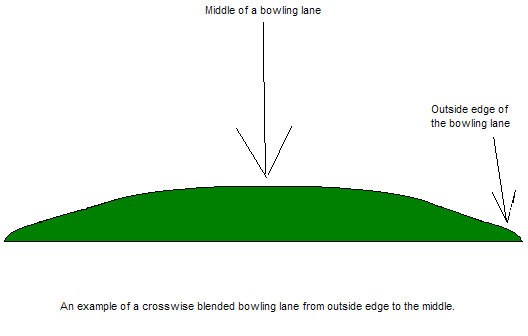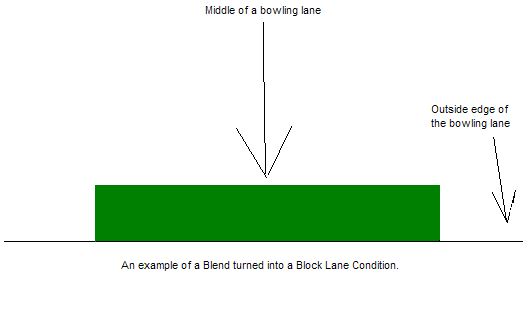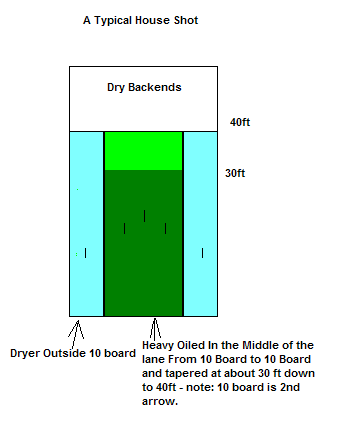Understanding Bowling Lane Conditioning
The Blocked Lane
Now that I have gone through the bowling ball motion, lengthwise taper, and crosswise blend, I will try to explain how this got turned into the type of scoring environment we have today. At least the start of it as I've see it happen over the last 31 years.
The blended condition is what we are suppose to be bowling on today, but the lane conditioning got changed from bug sprayers and burlap pads with a rotary buffing machine to the newer lane oiling machines. These new machines enabled the lane men to shim their machines for the crosswise blend and lengthwise taper very easily compared to the previous methods.
They also learned very soon that they could doctor their machines to make the blended lane pattern into a blocked lane condition. This was done very easily with only a few modifications in the shims. The bowlers liked the scoring on the new walled up lane condition and got so used to it that the bowling centers have never been able to change back even to this day.
So now they make special leagues for these blended patterns that we are suppose to bowl on all the time. The Sport bowling league and the national patterns are examples of blended lane conditions
The blended condition is what we are suppose to be bowling on today, but the lane conditioning got changed from bug sprayers and burlap pads with a rotary buffing machine to the newer lane oiling machines. These new machines enabled the lane men to shim their machines for the crosswise blend and lengthwise taper very easily compared to the previous methods.
They also learned very soon that they could doctor their machines to make the blended lane pattern into a blocked lane condition. This was done very easily with only a few modifications in the shims. The bowlers liked the scoring on the new walled up lane condition and got so used to it that the bowling centers have never been able to change back even to this day.
So now they make special leagues for these blended patterns that we are suppose to bowl on all the time. The Sport bowling league and the national patterns are examples of blended lane conditions
Here are some terms used in bowling lane conditioning.
1. Crosswise Blend
2. Lengthwise Taper
3. Heads
4. Midlane
5. Backend
6. Pin deck
7. Transition
8. Track Area
9. Blocked lane
10. Walled Up
11. Wall of China
12. The House Shot
(Note:These are just some Basic Terms).1. Crosswise Blend
2. Lengthwise Taper
3. Heads
4. Midlane
5. Backend
6. Pin deck
7. Transition
8. Track Area
9. Blocked lane
10. Walled Up
11. Wall of China
12. The House Shot

A Blocked Bowling Lane(Note: a blend was easy to turn into a block just by only put the shims in the middle of the oiling machines oil tank.)


